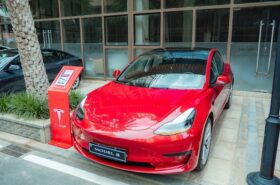If the world is to achieve the ambitious goal of being carbon neutral by 2050, innovations in renewable energy sources like solar will play a crucial role. There have been a couple of ground-breaking innovations in the world of solar that most people are not paying close attention to. Most of these innovations are geared toward making solar harvesting much more convenient and efficient than ever.
If you want to learn more about these innovations and how they could impact the future of renewable energy, this article is for you. We will discuss some of the most important inventions in solar energy that the world needs to pay more attention to in the next couple of years. By the end of this article, you will probably have one or two of these innovations that you could take advantage of if you plan to start using solar in your home or workplace.
The top 8 innovations in solar energy technology
Solar windows

These are actual windows that come with built-in solar panels that can collect energy from the sun and convert it into electricity which is then stored in batteries. These windows will still be transparent, just like regular windows, but with a small solar film responsible for collecting the sun’s energy. The idea behind solar windows is to ensure maximum collection of solar energy on almost every surface of the house.
If you already have solar panels on your roof, you may also choose to use solar windows to collect more solar energy. They can also be used for electric cars as an extra energy source to top up on the batteries. The only drawback of solar windows is that they can only collect solar energy during certain hours of the day when the sun is pointing in their direction.
So, you can’t rely on them to fully power a house like solar panels on the roof. That means you will have to use them alongside other solar panels in order to supply extra energy to the batteries.
Solar tiles
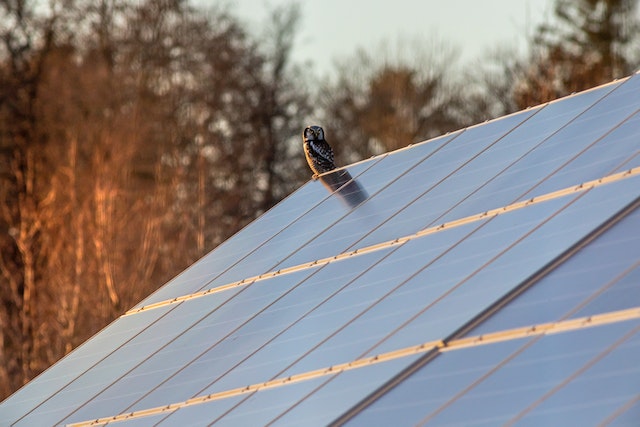
If you think the standard flat solar panels won’t look good on your roof, you now have a better alternative. Solar tiles look like traditional tiles that are used for roofing but with the capacity to collect solar energy. They have the same shape as the traditional tiles, so people in your neighborhood may not even know that you have solar panels on your roof.
These tiles are usually black or dark gray in color, a design choice aimed at maximizing heat absorption. So, some of the common colors of tiles, such as red, are not available in these kinds of tiles. However, this is a compromise you can make based on the many benefits of using solar tiles on your roof.
Solar tiles also increase the surface that is exposed to the sun hence collecting slightly more energy than flat panels. It also makes more sense to use tiles that double as solar panels instead of installing normal tiles and putting the standard solar panels on top of them. If you want to save money, using solar tiles is a much better option.
Floating solar farms
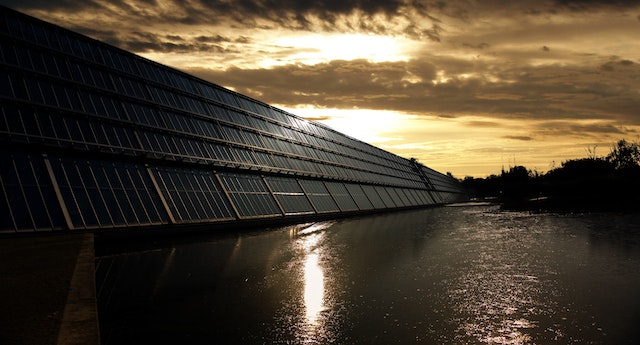
This involves installing solar panels on water bodies such as lakes and oceans. With floating solar farms, you don’t need huge chunks of empty land to create a large solar plant. Studies have also shown that floating solar farms collect over 10% more solar energy than panels installed in other places, including house roofs and mainland solar plants.
Besides generating more energy, these farms also help reduce the evaporation rate from the surface of the water bodies where they are installed. So, instead of evaporating the water, this energy is collected and stored as electricity. The installation costs of installing floating photovoltaic panels are less than land-based photovoltaic panels. This is mainly because they eliminate the cost of acquiring land, which is usually a significant cost depending on the location.
BIPV solar technology
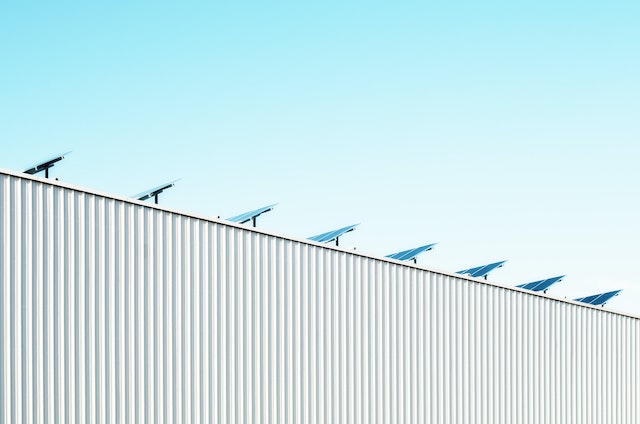
BIPV stands for Building-integrated photovoltaics. As its name suggests, BIPV involves integrating solar capabilities into several building components, including roofs, canopies, curtain walls, facades, and skylight systems. So, instead of having only solar panels or tiles on your roof, this technology allows you to make almost every surface of the building a solar panel.
One of the main benefits of using this technology is that it enables you to collect more solar energy in your home, saving you the cost of installing electricity from the main grid. You will also eliminate the costs of solar panel mounting systems that are usually incurred if you choose to mount the solar panels on your roof or some open area in your backyard.
Solar fabric

This might sound funny, but soon people will be able to collect solar energy using their clothes as solar panels. Researchers are developing solar fabrics with the goal of integrating solar panels into our regular clothes so that we collect and store solar energy on the go. This energy can be used to charge our devices, including phones and smartwatches.
For instance, if you go for activities such as long-distance hiking or biking on a sunny day, a solar fabric will enable you to keep your smartwatch and phone charged so that you don’t get inconvenienced just because one of your device’s batteries is about to die. Another use case would be soldiers who spend several days in the wild without access to power.
If they can have clothes with the capacity to store solar energy, it will be much easier for them to power their devices. Of course, this technology is still in the works, but it will really be cool if well implemented. However, there are several barriers that researchers need to overcome before solar fabrics can become mainstream.
One of these challenges is ensuring that the solar energy collected by the fabrics is enough to be usable. When doing certain activities like biking or hiking, the surface area of your body directly pointing in the direction of the sun is too small to gather enough solar energy. This will require using extremely efficient panels to ensure that almost every bit of sun that gets to your body is converted to electricity.
Microinverters
An inverter is a device used to convert DC from your solar panel into AC. Microinverters are used in photovoltaics to convert direct current (DC) generated by a single solar module to alternating current. Each microinverter is connected to a single solar panel for maximum control and reliability. One of the main advantages of microinverters is their price, which is way lower than traditional inverters. Having this technology will make it a lot easier for people to adopt solar since it brings down the cost of procuring the hardware required and installing it.
Solar panels that use microinverters maximize the energy produced since each panel has an inverter connected to it. In scenarios where one panel is obstructed for any reason, only that panel’s energy production will be affected. This makes it a more efficient solution as compared to string inverters that are connected to several panels.
Microinverters are also safe and reliable. Since each panel has an inverter, they convert the DC energy to AC right where it is produced. With string inverters, conversion is done at the end of the row, where the DC is often too high and more likely to cause issues. Microinverters have also made it possible to create some of the innovations we discussed earlier, including solar tiles, solar fabrics, solar windows, and more.
Infrared Spectrum Solar Panels
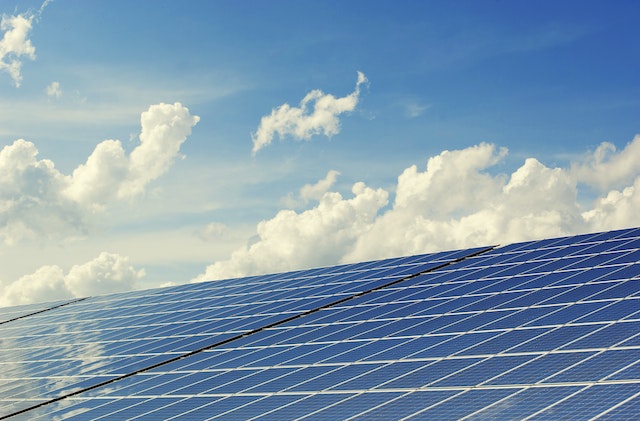
Most of the solar panels that we all know collect solar energy from the visible spectrum, leaving some bit of the light spectrum untapped. The goal of the Infrared spectrum solar panels is also to collect energy from the infrared spectrum and turn it into electrical power. Solar panels with this technology will be able to collect way more energy than conventional solar panels.
Most of the traditional solar panels are only able to convert about 20% of the sunlight they collect into electricity. With infrared spectrum solar panels, this percentage can be increased to about 35%. This technology is still in the early stages, but we could see some major breakthroughs in the next couple of years.
Cambridge Photon Technology is one of the companies that is researching ways to take full advantage of the entire spectrum of sunlight. Another startup called Rao is also working on similar technology, and it is hoping to have created a prototype that converts about 31% of sunlight into electricity by the end of 2022.
This technology will significantly increase the amount of solar energy that can be generated per unit area of a solar panel by almost 75%. This will be a huge benefit as it will reduce the amount of space needed to generate the same amount of solar energy generated today.
Solar skins

These are similar to the ad stickers put on buses and billboards. The only difference is that these will be placed on top of solar panels enabling them to collect solar energy and convert it into electricity. They use selective light filtration to simultaneously display a vibrant image and transmit sunlight to the underlying solar array.
Solar skins will make it possible to use solar panels in your house or workplace without sacrificing aesthetics. These skins can also be beneficial in corporate offices, making it possible to display business logos, business advertisements, a country’s flag, and more while collecting energy from the sun.
Another huge advantage of solar stickers is the fact that you can easily install them anywhere, and they also make surfaces look better since they hide the metal components of the solar panels.
Since the technology is also in its early stages, it is still unclear whether solar skins will be as effective and efficient as mainstream solar panels that are not covered with stickers. However, the convenience of having solar panels built into a skin or sticker that you can attach to any surface makes this technology really cool to have. You could also use them to make your roof look unique from the rest.
The future of solar is bright.
The above are some of the groundbreaking innovations that could significantly boost the adoption of solar energy in the next couple of years. As you might have noticed, the main objective for most of the solar technologies we have discussed is to boost efficiency, lower costs, ease the installation process, or make solar panels aesthetically look more appealing.
Most of the innovations we have shared are still in their early stages, so there could several iterations in the way they are implemented in the next couple of years. If you are planning to start using solar energy in your home, using solar tiles and BIPV solar technology is the ideal choice. These two innovations are already being used in the mainstream market, so you don’t have to wait for several years for them to be ready.
Solar skins are also a promising innovation with many practical use cases, especially for people who care about aesthetics. For instance, if you don’t want your roof to have the color of solar panels (dark gray or black), you can use these skins to give it any color of your choice. This alone can be a deal breaker to people who care about aesthetics.



